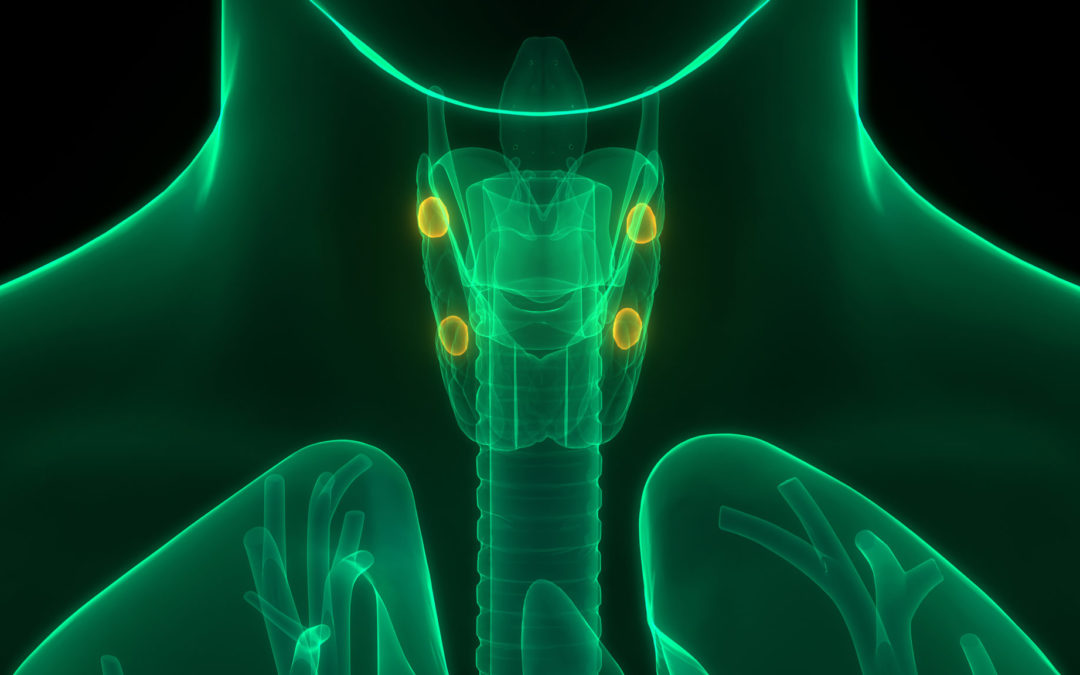Vitamin D is a fat-soluble vitamin that is naturally found in fatty fish, beef liver, cheese, and other foods and available as a dietary supplement. The vitamin is also delivered to the skin via natural sunlight.
The body uses vitamin D to promote calcium absorption in the gut. Additionally, vitamin D supports bone growth and remodeling and the neuromuscular and immune functions.
Clearly, vitamin D is beneficial, regardless of how it is obtained. On the other hand, there may be instances in which too much vitamin contributes to hypercalcemia.
Vitamin D Hypercalcemia: Here’s What You Need to Know
Hypercalcemia is a medical condition that causes calcium in the blood to surpass a normal level. Too much calcium can result in bone weakness, kidney stones, and heart and brain disruptions.
Hyperparathyroidism (HPT) is one of the leading causes of hypercalcemia. This condition occurs when one or more of the parathyroid glands becomes overactive.
The parathyroid glands are responsible for calcium regulation in the body. They produce parathyroid hormone (PTH) to help manage calcium in the body. But, if one or more of the parathyroid glands malfunctions, they may produce an excess amount of calcium. In this instance, HPT and hypercalcemia can occur.
In addition to HPT, other reasons why people experience hypercalcemia include:
● Cancer: Breast, lung, and other types of cancer have been linked to hypercalcemia. Additionally, people who experience metastasis (spread of cancer) are increasingly susceptible to hypercalcemia.
● Diseases: Tuberculosis, sarcoidosis, and other diseases have been shown to increase vitamin D in the blood and may lead to hypercalcemia.
● Dehydration: Severe dehydration results in less fluid in the blood, which can cause the blood calcium level to rise accordingly.
● Medications: Lithium and other medications can trigger the release of PTH, which can contribute to hypercalcemia.
● Lack of Mobility: People dealing with any medical conditions that make it difficult to move may be more inclined to sit or lie down for long periods of time; in these cases, people are susceptible to hypercalcemia, and any bones that cannot support their weight may release calcium into the blood.
Along with the aforementioned reasons, taking a vitamin D supplement over an extended period of time can cause the blood calcium level to rise. If calcium in the blood exceeds a normal level, hypercalcemia may develop.
A Closer Look at the Relationship Between Vitamin D Supplementation and Hypercalcemia
Vitamin D supplementation may be beneficial for people who are coping with a vitamin D deficiency. Mayo Clinic recommends adults get at least 600 international units (IU) of vitamin D daily. It also points out that 1,000 to 2,000 IU of vitamin D is safe and helps ensure the blood maintains an adequate amount of vitamin D to support various body functions.
Conversely, too much vitamin D may actually cause hypercalcemia and therefore symptoms include:
● Depression
● Fatigue
● Conjunctivitis
● Constipation
● Vomiting
● Nausea
● Confusion
Ultimately, vitamin D supplementation can do harm in the body, if not monitored or done properly. . If people are considering vitamin D supplements, they should first consult with a doctor. This allows people to determine if vitamin D supplements can safely and effectively be incorporated into an everyday diet.
For people who currently use vitamin D supplements and experience symptoms of hypercalcemia, HPT, or both, a medical assessment is paramount. Because, if these people meet with a doctor, they can find out the cause of their symptoms and determine the best course of action to address them.
How Are Hypercalcemia and HPT Diagnosed and Treated?
Blood tests are commonly used to diagnose hypercalcemia. These tests enable a doctor to see if a patient’s blood calcium level is higher than normal. They can also show if a patient’s PTH level is above-average, which indicates the patient may be dealing with HPT.
Treatment of hypercalcemia often involves the use of medications, such as:
● Calcitonin: Helps manage the blood calcium level.
● Calcimimetics: Help control an overactive parathyroid gland.
● Bisphosphonates: Have been shown to quickly lower the blood calcium level; bisphosphonates are sometimes used in patients dealing with hypercalcemia caused by cancer.
● Prednisone: Helps control hypercalcemia symptoms caused by too much vitamin D; prednisone may deliver short-term relief of hypercalcemia symptoms.
Patients who are dealing with one or more overactive parathyroid glands can undergo a minimally invasive parathyroidectomy (MIP), a surgical procedure that can typically be completed in about 20 minutes. The benefits of an MIP to remove any defective parathyroid glands include:
● Limited Scarring: An MIP requires minimal anesthesia, and most patients report limited scarring after treatment.
● Few Complications: The risks associated with an MIP are significantly less than those associated with a standard parathyroid surgery.
● High Success Rate: The success rate of an MIP generally falls between 93-95%; in contrast, the success rate of a traditional parathyroid surgery is usually between 80-85%.
An MIP performed by Dr. Babak Larian of the CENTER for Advanced Parathyroid Surgery may be beneficial. Dr. Larian possesses comprehensive parathyroid gland surgery expertise, and to date, he has helped many patients treat hypercalcemia and HPT.
Dr. Larian dedicates time and resources to learn about a patient’s symptoms and find out if one or more defective parathyroid glands are present. He also performs extensive testing during a patient evaluation and crafts a custom MIP treatment plan for his patient. Dr. Larian even performs a 4 gland assessment after an MIP to ensure the procedure has delivered the desired results.
Learn More About the Benefits of an MIP
Dr. Larian is available to discuss parathyroid gland surgery and its benefits and help patients determine if they qualify for this procedure. To learn more or to schedule a consultation with Dr. Larian, please contact us online or call us today at 310.461.0300.










